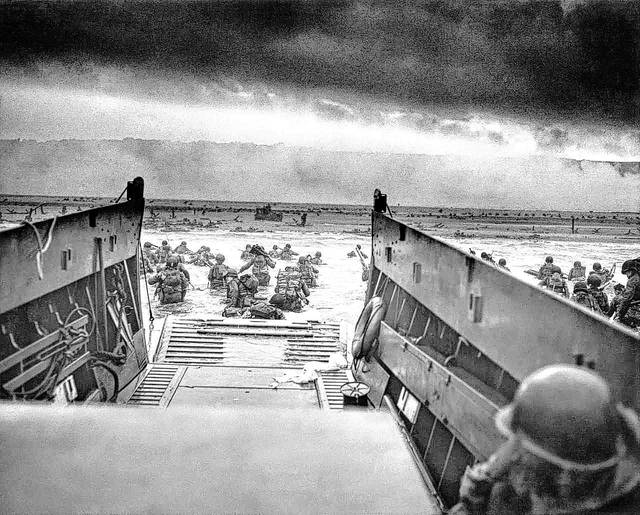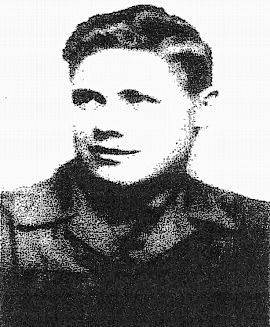ROCKINGHAM — June 6 brings up a world of memories for veterans of the second World War.
The beginning of the U.S. campaign in Western Europe in 1944, Operation Overlord or D-Day, saw thousands of young men give their lives in what would be the beginning of the end for Nazi Germany
On this day 74 years ago, Bunn “B.T.” Phillips, 93, of Rockingham, was a 19-year-old infantry soldier safely out of the line of fire on the western coast of England, helping to make sure the vehicles that would land on the beach were waterproof. He had to cover the essential parts of the vehicles with a putty-like substance that would protect them from water damage and put what he described as a “snorkel” on the exhaust pipes.
He wouldn’t join the fight until July 4, 1944 as a replacement rifleman with Company G of the 109th Infantry Regiment, U.S. 28th Infantry Division. Phillips landed at Omaha Beach and was part of the group that advanced into the hedgerows of Normandy about 10 miles inland.
The hedgerows, which were mounds of dirt and brush that could be six feet thick and as tall as 10 feet, formed a “giant checkerboard” that they had to take control of, Phillips said.
“It wasn’t fun,” he said.
Phillips said the German’s bombed them “about every night,” but only because the Allies controlled the skies during the day. They would strafe, or bomb, them starting around 11 p.m. and Phillips said he and his comrades just had to endure it — “It wasn’t like we could go sleep in a motel.”
Phillips went on to serve in five campaigns thru the brutal Battle of the Bulge in December 1944, where he said he was “at the very front” of the fighting. During that battle, Phillips said, he was leading a group of men up a hill through thick snow when a German soldier, wearing a white camouflaged uniform, shot him with a sub-machine gun that cut the belt of his pants off, but he made it out alive.
“Other than that, you can be assured it was a lot of fun over there,” Phillips joked.
Another close call came when Phillips was riding on the back of a tank as his division advanced on the town of Albuff, France. He was sitting shoulder-to-shoulder with two friends, Phillips on the side, when the man in the middle was killed by a sniper shot.
That same operation was where the first American soldier to be court-martialed and executed by a firing squad for desertion since the Civil War, Eddie Slovik, first left his assignment. According to American Heritage, Slovik was a replacement assigned to join Phillips’ company, but after rough shelling on his first day of combat, he and another man hid, eventually turning themselves in to the Canadian military police, opting for a what they expected to be a prison sentence rather than a death sentence.
His confession read: “I was so scared nerves and trembling that at the time the other replacements moved out I couldn’t move. I stayed there in my fox hole ‘till it was quite and I was able to move.”
He continued: “I told my commanding officer my story. I said that if I had to go out their again I’d run away. He said their was nothing he could do for me so I ran away again and I’ll run away again if I have to go out there.”
One of the judges who convicted Slovik, Benedict Kimmelman, wrote in 1987 that Slovik was made an “example” of to deter other deserters.
Boyd Taylor, 96, was 20 years old on D-Day, a member of the 6th Armored Division in the 3rd Army under Gen. George Patton, and arrived at Omaha Beach a few days after the first wave of the invasion. Taylor said that, at the time, he didn’t realize the magnitude of what he was a part of, but now looks back in awe at what was accomplished — not only by the soldiers but by the people back home providing them supplies.
“I’m just a poor country boy but I marvel at how we were able to be supplied with what we needed,” Taylor said. He talks nostalgically of the ships he rode alongside towards the beach which stretched “as far as the eye could see.”
“I could imagine how the German soldier saw all those ships out there, he must have been overwhelmed,” he said. “(Operation Overlord) had to be awesome to succeed.”
He said he came to appreciate the tough training he was put through, which carried him through all five European campaigns — though he said, “you learn to be a soldier in combat.” Taylor said his company had 248 percent casualties from the beginning to the end of the war, making it hard to get to know people in his company.
He saw Gen. Patton once, and said he was had his medals on display, with a white-gripped gun on his hip, and that his face was so red that he wondered if he was a “liquor-head.” (He later found out that it was wind-burn from driving around in a topless jeep in the freezing cold.)
Taylor, having just returned from a stint in the hospital on Monday, recalled the first televised anniversary he watched where now-aged soldiers were interviewed about their service and said he “put out a lot of tears that day.”
“It’s a sad thing,” he said. “I do think of that — those young people that I knew that didn’t make it.”


